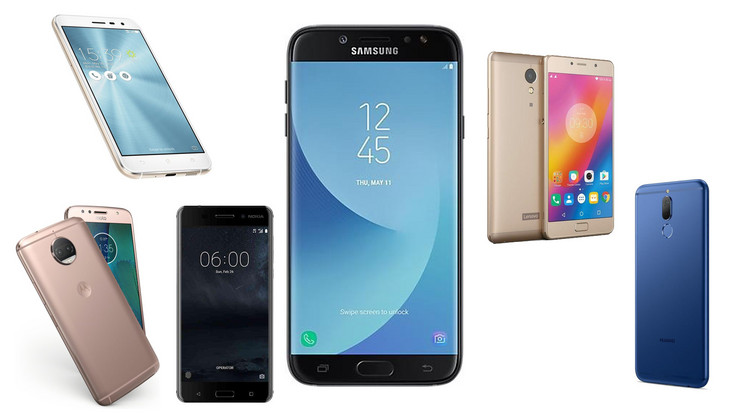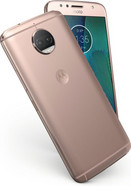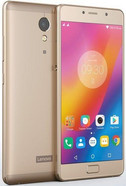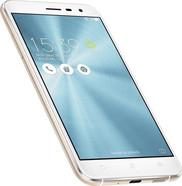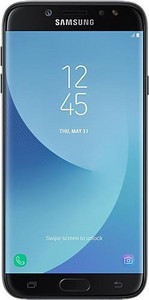The best alternatives to the Samsung Galaxy J7 (2017)
Since the middle of 2017, the Samsung Galaxy J7 (SM-J730F) has been available for 339 Euros RRP (~$400). The 2017 variant of Samsung's mid-range 5.5-inch large-screen smartphone is as popular with our users and apparently also with customers as its somewhat smaller brother, the Galaxy J5. After having already looked at the Galaxy J5 to see which devices could be considered alternatives, we now want to look at and compare the most important competitors for the larger version.
Within the price range of 250 to 350 Euros (~$350 to $450) there are several competitors for the satisfaction of the customer: Rather fresh is the Motorola's Moto G5s Plus; since last year on the market are the Lenovo P2 with a huge and enduring battery and the Asus ZenFone 3, which has a stylish case that radiates premium class flair. The Nokia 6 does not only rely on the iconic name, but also offers pure Android and all around good technology. The Huawei Mate 10 Lite completes the field of challengers with a borderless display and two dual cameras.
| Specs | Galaxy J7 (2017) | Motorola Moto G5s Plus | Huawei Mate 10 Lite | Nokia 6 | Lenovo P2 | Asus ZenFone 3 |
|---|---|---|---|---|---|---|
| Display | 5,5“, OLED, 1080p | 5,5“, IPS, 1.080p | 5,9“, 2:1, IPS, 1.080p | 5,5“, IPS, 1080p | 5,5“, OLED, 1.080p | 5,5“, IPS, 1080p |
| SoC | Exynos 7870 | Snapdragon 625 | Kirin 659 | Snapdragon 430 | Snapdragon 625 | Snapdragon 625 |
| RAM | 3 GB | 3 GB | 4 GB | 3 GB | 4 GB | 4 GB |
| Flash memory | 16 GB | 32 GB | 64 GB | 32 GB | 32 GB | 64 GB |
| Dual-SIM | yes | Hybrid | Hybrid | Hybrid | Hybrid | Hybrid |
| MicroSD | yes | yes | yes | yes | yes | yes |
| Fingerprint | yes | yes | yes | yes | yes | yes |
| Cameras | 13 / 13 MP | 13+5 / 8 MP | 16+2 / 13+2 MP | 16 / 8 MP | 13 / 5 MP | 16 / 8 MP |
| Battery | 3.600 mAh | 3.000 mAh | 3.340 mAh | 3.000 mAh | 5.100 mAh | 3.000 mAh |
Case
With the 2017 edition of the Galaxy J7 Samsung has done a good job on the case: The chassis is made of aluminium and is cut from one piece. The battery is now permanently installed though. In the previous version it could still be replaced. The 5.5-inch display is still in the classic 16:9 format, with wide margins at the top and bottom. In the reference field
only the Huawei Mate 10 Lite offers the modern 2:1 format with narrow margins on all sides.
With a height of 8 millimeters (~0.3 in), the Galaxy J7 is in the mid-range when it comes to construction height. The remaining dimensions are relatively compact, but the difference in size compared to similar models is marginal. The Samsung Galaxy J7 is a fairly heavy duty smartphone. Even the massive Lenovo P2 with its huge battery is a few grams lighter.
In terms of housing quality, all comparable devices are at a high level, but the Lenovo P2 has two plastic covers on the back, which can break in the event of a fall and differ slightly in color. This is a light deduction; otherwise the metal casing is of high quality here as well. We like the slightly retracted camera of the Galaxy J7, which is protected against scratches due to its positioning.
Samsung Galaxy J7 (2017) Duos is the only device that offers dual SIM functionality that also allows the simultaneous use of a microSD card. For all comparison devices, you have to choose between the second SIM and microSD card for memory expansion, as they share a slot. They all come with a fingerprint reader. In the Samsung Galaxy J7 it also serves as a home button. With the devices from Motorola and Lenovo as well as the Huawei Mate 10 Lite the fingerprint reader can also be used for navigation via gestures.
Display, features and performance
It is great that the Samsung Galaxy J7 (2017) has an AMOLED display: bright colors and theoretically endless high contrasts create a vibrant image impression. In the reference field, only the Lenovo P2 offers an AMOLED display which brings with it a problem similar to the display of the Galaxy J7: Since there is no backlight, it is not possible to reduce the brightness of the display by reducing the illumination. This is why OLED displays use pulse width modification, i.e. they switch the display off and on again at high frequency to reduce the amount of light that penetrates the eye. That is not a problem in itself if it happens fast enough. The screen of the Galaxy J7 is activated and deactivated approximately 258 times per second, which could cause irritation for very sensitive users.
The resolution of 1920x1080 pixels is the standard that all devices in the comparison meet. The Huawei Mate 10 Lite has slightly more pixels on the long side to compensate for the different aspect ratio. The display of the Asus ZenFone 3 lights up the brightest, while all other displays have an average brightness of between 450 and 500 cd/m² . On the Galaxy J7, however, you have to activate the brightness sensor; otherwise the maximum brightness is noticeably lower.
With only 16 GB of internal memory, the Samsung Galaxy J7 (2017) is almost stingy, while the competing devices from Huawei and Asus offer 64 GB of storage for a similar price. In terms of RAM, 3 GB is at least competitive, but even here there are many comparable devices that offer one GB more. The Galaxy J7 is equipped with an NFC chip, but there is still an older micro-USB port that at least supports USB-OTG. Only the Asus ZenFone 3 offers a USB-C connection in the reference field.
Apart from the Galaxy J7, you can also get a fast 802.11-ac-WLAN with the Lenovo P2 and Asus ZenFone 3, but otherwise you will not find it. The Huawei Mate 10 Lite cannot even handle the less busy 5 GHz network for Wi-Fi networks. Samsung's mid-range smartphones also excel in transmission speeds. LTE Cat. 6 is also not yet standard on all devices. The Nokia 6, for example, offers a lower LTE speed.
In terms of performance, the Galaxy J7 is no longer fully competitive in its range: The Exynos 7870 is the same SoC used in the Galaxy J5 (2017) and is clearly inferior to a Snapdragon 625, as used in the Lenovo P2 or the Motorola Moto G5s Plus, for example. The Samsung Galaxy J7 often enough finishes last in graphics calculations. However, this is especially noticeable when you use elaborate apps or games. In everyday use the smartphone is very fast. The Galaxy J7 accesses an inserted microSD faster than the comparators, whereas the internal memory is much slower.
| Samsung Galaxy J7 2017 Super AMOLED, 1920x1080, 5.5" | Nokia 6 IPS, 1920x1080, 5.5" | Huawei Mate 10 Lite IPS, 2160x1080, 5.9" | Motorola Moto G5s Plus IPS, 1920x1080, 5.5" | Asus Zenfone 3 ZE552KL IPS, 1920x1080, 5.5" | Lenovo P2 AMOLED, 1920x1080, 5.5" | |
|---|---|---|---|---|---|---|
| Response Times | ||||||
| Response Time Grey 50% / Grey 80% * (ms) | 4.8 ? | 48 ? | 43.2 ? | 50.8 ? | 56 ? | 8 ? |
| Response Time Black / White * (ms) | 4 ? | 34 ? | 28 ? | 25.6 ? | 36 ? | 6 ? |
| PWM Frequency (Hz) | 257.7 | 2404 ? | 240.4 | |||
| Screen | ||||||
| Brightness middle (cd/m²) | 454 | 512 | 467 | 512 | 658 | 479 |
| Brightness (cd/m²) | 463 | 501 | 457 | 500 | 633 | 477 |
| Brightness Distribution (%) | 86 | 94 | 89 | 90 | 93 | 91 |
| Black Level * (cd/m²) | 0.36 | 0.3 | 0.35 | 0.66 | ||
| Colorchecker dE 2000 * | 2 | 6.4 | 5 | 4.6 | 4.9 | 2.4 |
| Colorchecker dE 2000 max. * | 5.3 | 10.9 | 8.2 | 7.6 | 9.1 | 5.6 |
| Greyscale dE 2000 * | 1.7 | 7.2 | 6.1 | 3.8 | 5.8 | 2.8 |
| Gamma | 2.1 105% | 2.28 96% | 2.15 102% | 2.11 104% | 2.26 97% | 2.28 96% |
| CCT | 6394 102% | 7904 82% | 7961 82% | 6952 93% | 7840 83% | 6702 97% |
| Contrast (:1) | 1422 | 1557 | 1463 | 997 | ||
| Total Average (Program / Settings) |
* ... smaller is better
| PCMark for Android - Work performance score | |
| Asus Zenfone 3 ZE552KL | |
| Huawei Mate 10 Lite | |
| Motorola Moto G5s Plus | |
| Nokia 6 | |
| Samsung Galaxy J7 2017 | |
| Lenovo P2 | |
| AnTuTu v6 - Total Score | |
| Motorola Moto G5s Plus | |
| Lenovo P2 | |
| Huawei Mate 10 Lite | |
| Asus Zenfone 3 ZE552KL | |
| Samsung Galaxy J7 2017 | |
| Nokia 6 | |
| 3DMark | |
| 1280x720 offscreen Ice Storm Unlimited Score | |
| Asus Zenfone 3 ZE552KL | |
| Lenovo P2 | |
| Motorola Moto G5s Plus | |
| Huawei Mate 10 Lite | |
| Nokia 6 | |
| Samsung Galaxy J7 2017 | |
| 1280x720 offscreen Ice Storm Unlimited Graphics Score | |
| Asus Zenfone 3 ZE552KL | |
| Lenovo P2 | |
| Motorola Moto G5s Plus | |
| Huawei Mate 10 Lite | |
| Nokia 6 | |
| Samsung Galaxy J7 2017 | |
| 1280x720 offscreen Ice Storm Unlimited Physics | |
| Asus Zenfone 3 ZE552KL | |
| Motorola Moto G5s Plus | |
| Lenovo P2 | |
| Samsung Galaxy J7 2017 | |
| Huawei Mate 10 Lite | |
| Nokia 6 | |
| GFXBench (DX / GLBenchmark) 2.7 | |
| T-Rex Onscreen | |
| Lenovo P2 | |
| Asus Zenfone 3 ZE552KL | |
| Motorola Moto G5s Plus | |
| Nokia 6 | |
| Huawei Mate 10 Lite | |
| Samsung Galaxy J7 2017 | |
| 1920x1080 T-Rex Offscreen | |
| Asus Zenfone 3 ZE552KL | |
| Lenovo P2 | |
| Motorola Moto G5s Plus | |
| Nokia 6 | |
| Huawei Mate 10 Lite | |
| Samsung Galaxy J7 2017 | |
| Octane V2 - Total Score | |
| Huawei Mate 10 Lite | |
| Asus Zenfone 3 ZE552KL | |
| Samsung Galaxy J7 2017 | |
| Motorola Moto G5s Plus | |
| Lenovo P2 | |
| Nokia 6 | |
| AndroBench 3-5 | |
| Sequential Read 256KB | |
| Huawei Mate 10 Lite | |
| Asus Zenfone 3 ZE552KL | |
| Nokia 6 | |
| Lenovo P2 | |
| Motorola Moto G5s Plus | |
| Samsung Galaxy J7 2017 | |
| Sequential Write 256KB | |
| Asus Zenfone 3 ZE552KL | |
| Huawei Mate 10 Lite | |
| Nokia 6 | |
| Lenovo P2 | |
| Motorola Moto G5s Plus | |
| Samsung Galaxy J7 2017 | |
| Sequential Read 256KB SDCard | |
| Nokia 6 | |
| Motorola Moto G5s Plus | |
| Lenovo P2 | |
| Asus Zenfone 3 ZE552KL | |
| Samsung Galaxy J7 2017 | |
| Huawei Mate 10 Lite | |
| Sequential Write 256KB SDCard | |
| Samsung Galaxy J7 2017 | |
| Lenovo P2 | |
| Motorola Moto G5s Plus | |
| Nokia 6 | |
| Asus Zenfone 3 ZE552KL | |
| Huawei Mate 10 Lite | |
Cameras
In terms of the number of megapixels, the specifications of the cameras in the Samsung Galaxy J7 (2017) are good: 13 megapixels at the back and front. At the back there is a two-colored flash and autofocus, at the front a monochrome flash and fix focus. Both cameras can record video in Full HD. The resolution of the front camera in particular is a statement. Only the Huawei Mate 10 Lite can keep up with it. As for the main camera, there are also other 16-megapixel lenses in this price range. For example, such as Nokia and Asus.
The images from Samsung Galaxy J7's main camera seem a little dark and the colors are a bit pale. The Huawei Mate 10 Lite, for example, brightens up considerably better and the ZenFone 3 also makes for brighter and more colorful pictures. All in all, the photos from the Samsung Galaxy J7 are on par with the rest, but do not go beyond that.
Battery life
Now that the rechargeable battery is permanently installed, the capacity has improved: 3600 mAh is a statement that can only be surpassed by the Lenovo P2 with its huge 5100 mAh battery. Nevertheless, the device also has to surrender to the Motorola Moto G5s Plus, whose engineers have drawn a considerable amount of WLAN runtime from the smaller battery. Here the Huawei Mate 10 Lite is clearly falling behind. At 15:04 hours of battery life in the WLAN test, the Samsung Galaxy J7 certainly does not need to fear comparison. If you are rather economical, the Samsung Galaxy J7 should easily endure two working days.
| Samsung Galaxy J7 2017 3600 mAh | Nokia 6 3000 mAh | Huawei Mate 10 Lite 3340 mAh | Motorola Moto G5s Plus 3000 mAh | Asus Zenfone 3 ZE552KL 3000 mAh | Lenovo P2 5100 mAh | |
|---|---|---|---|---|---|---|
| Battery runtime | ||||||
| Reader / Idle (h) | 32.5 | 28.3 | 19.2 | 24.9 | 25 | 47.4 |
| H.264 (h) | 18.3 | 9 | 8.4 | 15.1 | 20 | |
| WiFi v1.3 (h) | 15.1 | 11.2 | 8.7 | 16.2 | 13.3 | 16.3 |
| Load (h) | 8.8 | 3.8 | 3.7 | 7 | 5.9 | 8.8 |
Verdict
Not having any major weakness is probably the greatest strength of the Samsung Galaxy J7 (2017). However, there is one thing bothering us and it may not be noticeable in everyday life: The weak SoC is clearly lagging behind comparable devices, and the memory is accessed very slowly. Since the Galaxy J7 operates completely smoothly when it comes to menu navigation and simple apps, only those who often use their smartphone for complex apps should notice this. At times, the Galaxy J7 even stays under mid-range standards: Memory configuration, for example, is better in all comparable devices.
Apart from that, however, the Galaxy J7 is almost always impressive: a sturdy and stylish casing, a colorful and high-contrast display, neat cameras, especially for Selfies, and long battery life. The competing devices can only score at certain points, as additional features in this price range have a limited budget. The Lenovo P2 scores with its incredibly enduring battery, but cannot keep up with its body and camera. Motorola Moto G5s Plus also offers good battery life and high performance. The dual cameras and the casing of the Huawei Mate 10 Lite are appealing, but the battery does not last that long. The Asus ZenFone 3 offers an attractive design and a very bright display. In addition to the nostalgic value, the good camera and the pure Android are convincing features of the Nokia 6.
A safe choice for those who do not want to deal with technical details: The Samsung Galaxy J7 (2017) does not allow any room for major mistakes. However, for performance junkies or runtime fans the competing devices are often the better option.
The Samsung Galaxy J7 (2017) is for anyone who does not exactly know what they need. It almost always wants to be a safe choice because it does not really do anything wrong. The comparison devices do not really make huge mistakes either, and thus it is to a large extent a question of taste as to which smartphone really fits the mid-range buyer. Only those who prefer a lot of power should leave their hands off the Galaxy J7 and consider one of the comparable devices from Huawei, Asus or Motorola. If you want to charge your smartphone as rarely as possible, the Lenovo P2 is a good bet.


